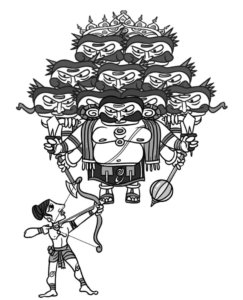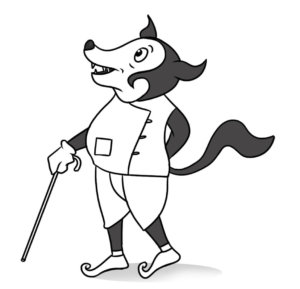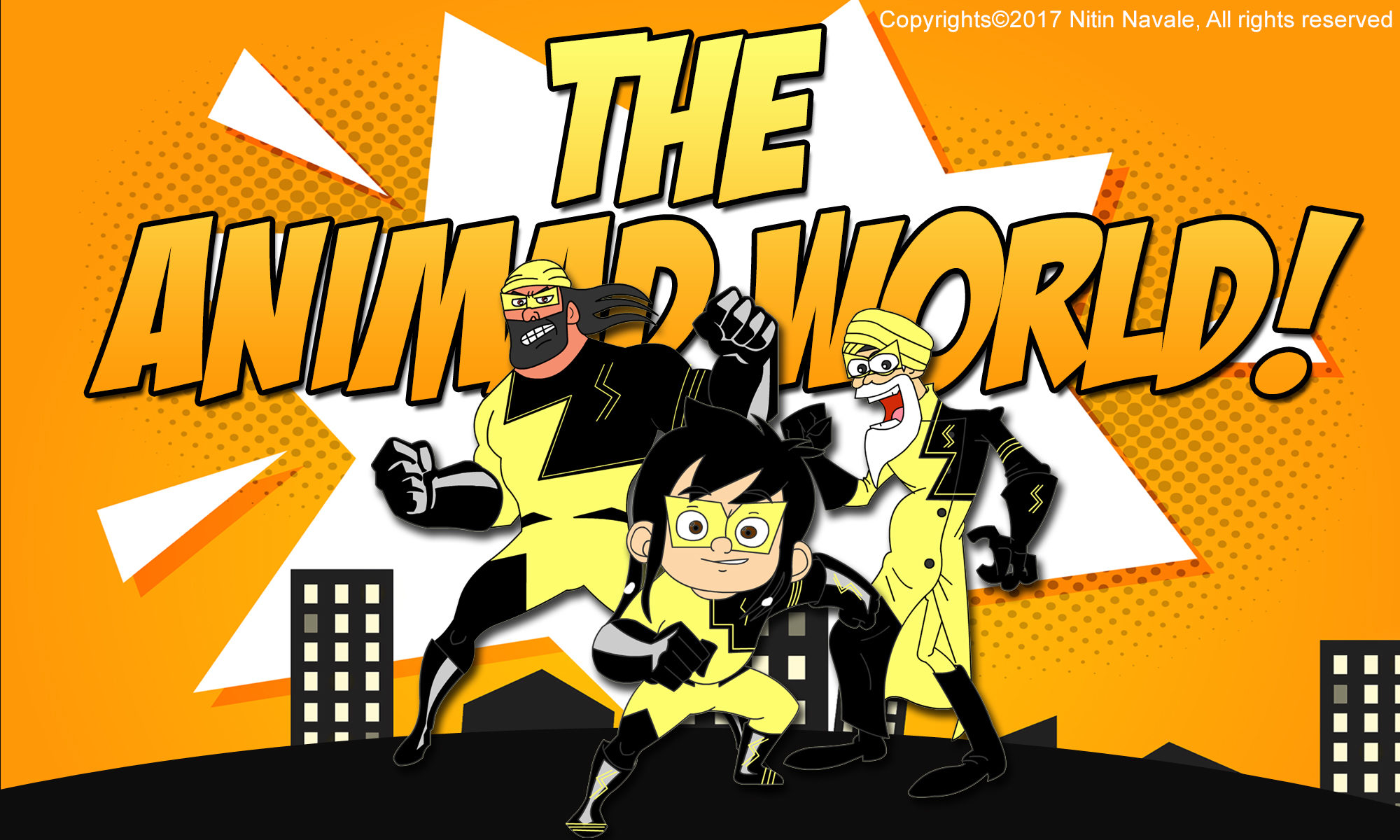“All our dreams can come true if we have the courage to pursue them.”
― WALT DISNEY.
Before we witnessed the spectacular visual effects of Bahubali before children got hooked on tv sets to watch Chhota Bheem, and even centuries before the dawn of animated films and motion cinema came into existence. Indians have figured out to enjoy the art of storytelling through an ingenious technology of projecting animated pictures on the silver screen called Tholu bommalata.

It is the traditional art of shadow puppetry that originated in the state of Andra Pradesh that enabled people to bring a hundred or more colorful mythological characters to life in the most remote village, all accompanied by virtuoso singing, engaging rhythms, and enchanting sound effects.
Then around the 19th century, during the British era, a Mumbai-based engineer Maadanrao Madhavrao Chitale, painted some events from the life of Srikrishna on slides and showed them to audiences for fun with the help of an invention called Magic Lantern that gave the impression of moving pictures. Fascinated by this new form of illusion, the father and son duo of Mahadev Patwardhan and Vinayak Mahadev Patwardhan saw a business opportunity in it. And took their show to the live audiences with the name Shambarik Kharolika.
And as time progressed, we saw the birth of technological marvels that revolutionized the art of storytelling, the motion picture camera invented by the Lumiere Brothers. This wonder machine opened the floodgates to many storytellers, and we were submerged into the depth of its potentialities.
And soon, the world witnessed its first-ever animated film created by Émile Cohl, who shot thousands of his own drawings. The film mainly consists of a stick man moving about and encountering all manner of morphing objects, such as a wine bottle that transforms into a flower that becomes an elephant.
And later on this side of the world, the pioneer of Indian cinema, Dada Saheb Phalke, created a stop motion movie using matchsticks called ‘Agkadyanchi Mouj’- ‘The Game of Match Sticks’, which is hailed as the beginning of Indian animation.
And since then, we saw the rise of many skilled and enthusiastic filmmakers and animators trying their hands in this art form. Amongst them was ‘The Pea Brothers’ made by Gunamoy Banerjee in 1934, which was the first animated film in India to get a theatrical release. Using the classical hand-drawn animation style, this movie featured the story of five peas popping out and transforming into toys that motivated many aspiring artists to pursue this form of animation.
And later in the same year, Kolkatta-based director Birendranath Sircar pulled out a film called “On a moon night” in just a month. The fascinated thing about this movie was that it was the first time that soundtrack was added into an Animated film that amused the audiences like never before.
Then on the 15th of November 1934, Animator Raghunath K. Kelkar, along with Pune-based Prabhat Film company founded by V. Shantaram, released an animated shot called Jambu kaka at Majestic Cinema in Mumbai.

Jambu Kaka
This shot featured a humanized Jackal that gained immense popularity amongst its viewers and helped Indian animation-grow further. This eventually led to a decade full of innovative and imaginative movies, right from Lafanga Langoor in 1935 by Mohan Bhavani, “Superman Myth” in 1939 by G.K Gokhale, Bakam Bhatt by Kolapur Cinetoons, “Akash Pataal’ by Mandar Malik, and IFI’s “The War that never ends.” And with it ended the long-fought war against the colonial rule, and most of the works were lost somewhere in the pages of history.
But, not all hopes were lost, as the whole country was engulfed in the celebration of newly found independence and a sense of nationality. Gemini Studios of Chennai released a wholly Indian animation film called “Cinema Kadambam,” a series of animated caricatures of famous film stars of the ’40s made by N. Thanu.
And meanwhile, in Mumbai, Animators Gupte and Ghokle were planning to revolutionize the advertising sector and created an animated series called Rangeen Chutkiya, which held its position till 1955.
And next year, in 1956, Indian animation regained its spirit with the arrival of Disney’s Animator Claire Weeks under the Indo-American technical co-operation program. His mission was to expose Indian artists to advanced technological and creative equipment and helped to set-up India’s first-ever animation studio.
And with it, began the production of the first independent animation film called “The Banyan Deer” in the year 1957, inspired by the Jataka tales. Staying true to the intention of the Indo-US relationship, the film also resembled the mixture of Indian and American art styles. The human characters were inspired by the artistic style of Ajanta caves, while the Deer had a close resemblance to Disney’s Bambi.

This film was widely appreciated and tasted great success that helped to launch the careers of some of the best-known artists in the history of Indian Animation.
And with the success of The Banyan deer and many other short-films and shows, the next decade brought the era of experiments, trials, and errors as many bold artists tried various techniques such as time-lapse, cut-out animation, stop-motion, claymation, etc.
Many of these were used as propaganda films to promote the government’s ideology and influence the citizens to adopt a better standard of living. Soon animation began to transform from merely an art to a full-fledged career.
And with it, we saw the rise of great artists like Madhava Kunte, Ramesh Potnis, Bhimsain Khurana, who is best known for his short film Ek Chidiya Anek Chidiya, V.G Sawant, and none other the legendary Ram Mohan hailed as the father of Indian Animation and only Indian animator to receive the prestigious Padma Shri Award by the Government of India.

Ram Mohan, Legendary Animator.
And as these artists were pushing the boundaries of this art form, the technology was also evolving rapidly, and soon, we witness the arrival of computers that quickly became part of the animation industry. This new-found tool helped save a lot of valuable time, sweat, and efforts that go into making a traditionally animated film.
Yes, something as simple as a walk cycle could take as much as eighteen hand-drawn images drawn in a sequence that loop to create an animation of a walking character. The number of drawings can increase or decrease depending upon the character’s personality, timing, phase, and many, along with essential animation principles without which the animation won’t look as good as it seems that we will learn in the upcoming chapters.
But the arrival of new technology like 2D animation and especially 3D animation cut short the output time to half, and our highly skilled and talented artists were quick to adopt this new form of working style.
And with it began a new era and came to the much-needed boom in the market of the Indian animation industry. Soon we saw the rise in demand for our domestic services in the international arena due to our quality work at a much lower price.
And since then, Indian animators have continued to showcase their capabilities around the globe that can be reflected by the number of awards we have won until this time. But sadly, we found ourselves stuck under the influence of Disney style for a longer period and have been on a roller-coaster ride in its history of over a hundred years.
Even though with the rise of many great artists like Ram Mohan, V.G Samant, and the extreme popularity of shows like Chhota Bheem, Little Singham, and movies like Hanuman, Bal Ganesha, Indian animation is still struggling to earn the respect of our local audiences.
But why is that why other countries like Us, Japan, embraced this art and have managed to turn this medium into full-fledged family entertainment, whereas, in India, it is still looked down on as purely children’s genre and is ignored by almost all adults?
But more importantly, why don’t we shy away from investing our time and money into watching International films like Kung-fu Panda, The Incredibles, but won’t even think of walking into the theater to watch domestic Animated movies?. What makes Disney, Pixar, and Ghibli so successful, and what is that we need to adopt from them to grow and prosper in terms of art, style, commerce, and entertainment.
In the upcoming articles, we will explore answers to all these and many more questions and debunk the mysteries behind the success of western and Japanese animated films and the struggle behind our industry. With each article, we will look at some fundamental and deeply rooted faults in it, things that have worked for us, and things that have led to the downward slope of the art of animation.
As an animator, as a writer, and more importantly, as an audience, my intention behind writing this book is to help the new and younger generation of artists and everyone interested in the medium to take learn from our past, fix our present, and take a leap into the future. And hopefully, together, we can support our beloved art to earn a place in the hugely profitable business of family entertainment.



2 Replies to “CHP ONE: THE HISTORY OF INDIAN ANIMATION”